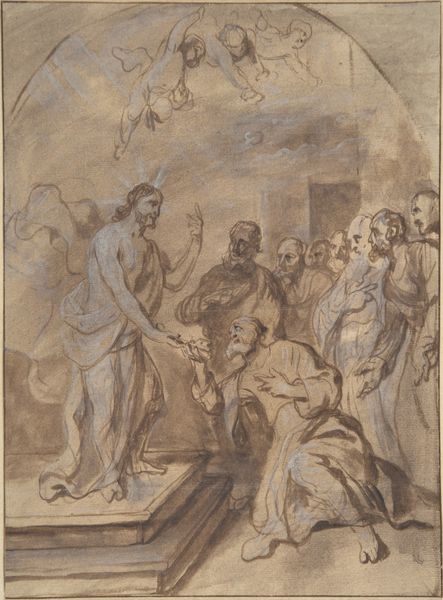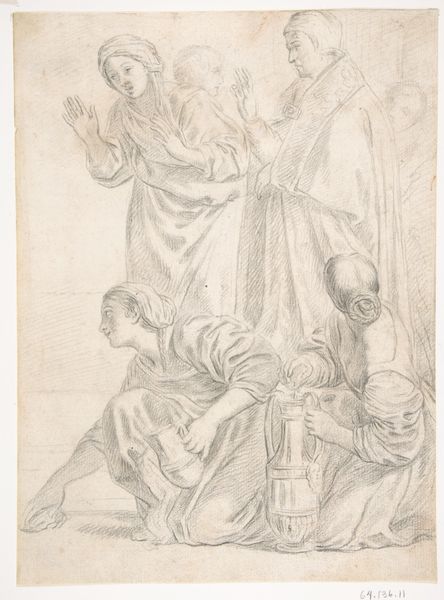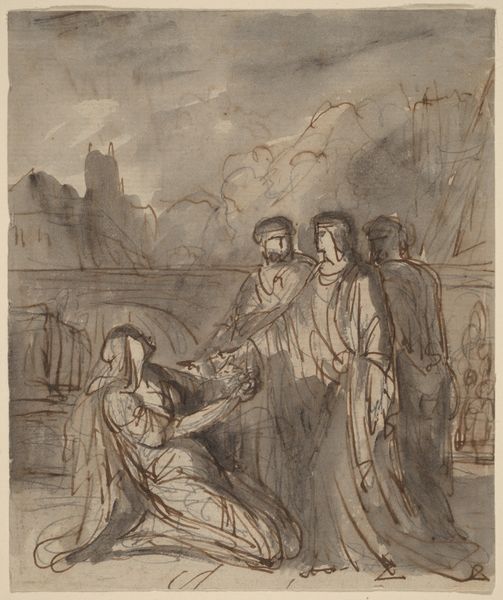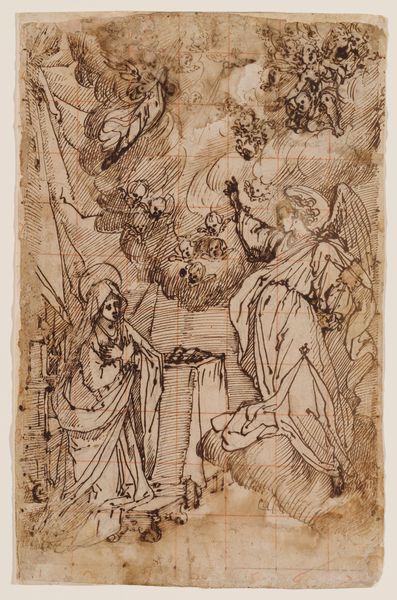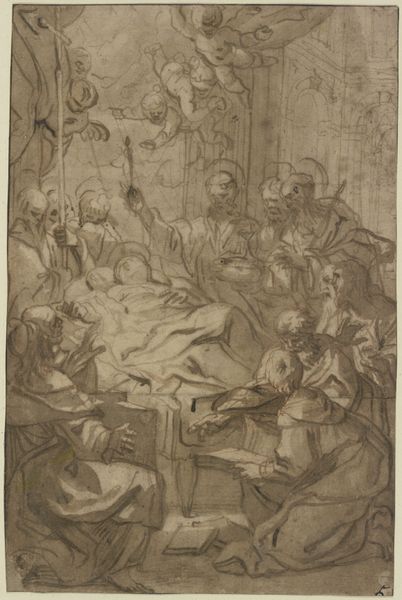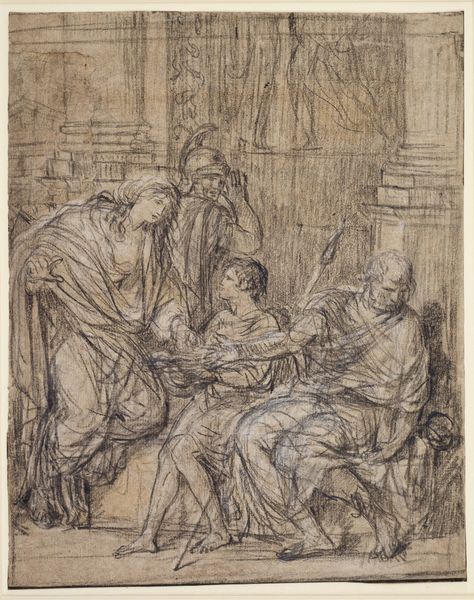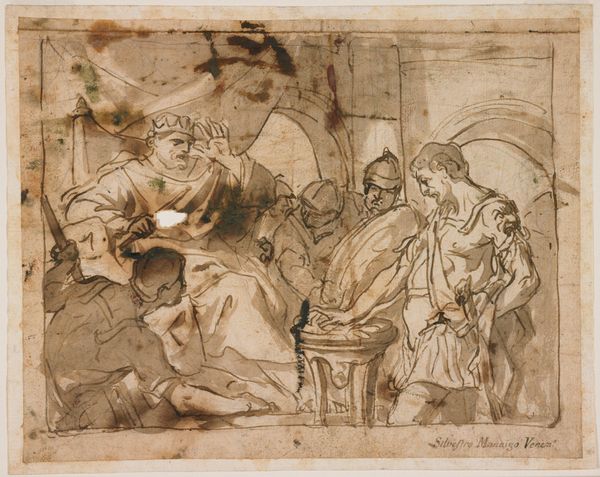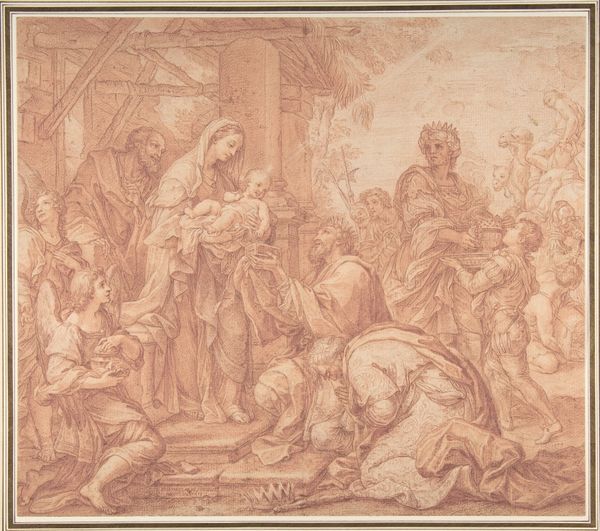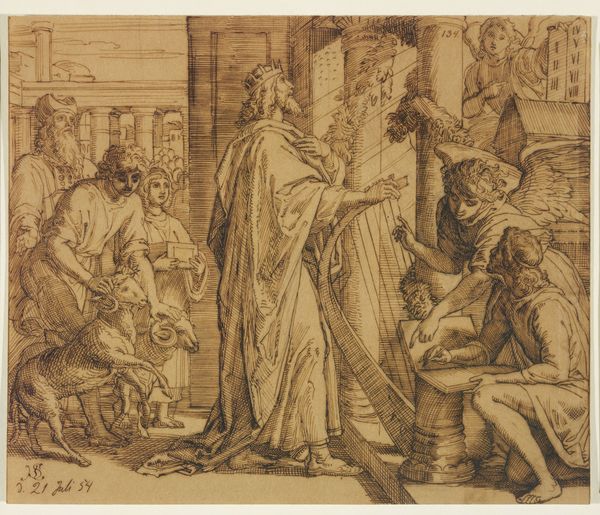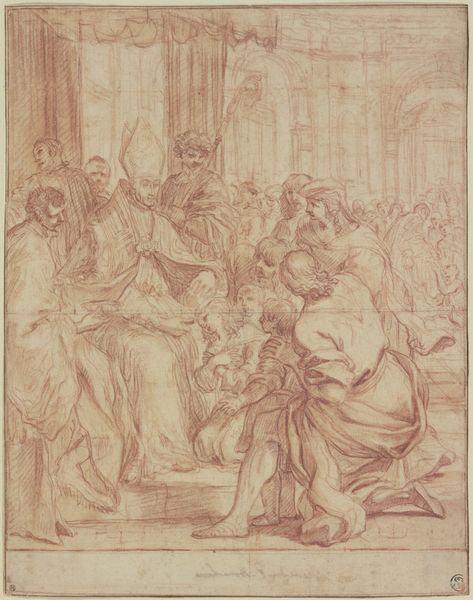
Christ and the Centurion (recto); Figure Waving to Departing Ship (verso). 1665 - 1714
0:00
0:00
drawing, paper, ink, charcoal
#
drawing
#
narrative-art
#
baroque
#
charcoal drawing
#
figuration
#
paper
#
ink
#
pencil drawing
#
men
#
charcoal
#
history-painting
#
christ
Dimensions: sheet: 9 x 11 3/4 in. (22.9 x 29.9 cm)
Copyright: Public Domain
Editor: This is “Christ and the Centurion” from sometime between 1665 and 1714, drawn by Giuseppe Passeri with ink, charcoal, and pencil on paper. It looks like a really intense scene, but it’s hard to decipher exactly what’s happening. How do you interpret this work, particularly in the way it might have been seen in its time? Curator: Notice how Passeri emphasizes the figure of Christ, not through sheer size, but through his calm, centered presence amidst the emotional turmoil. Look at the figure kneeling before him; his desperate gesture is almost pleading. That dynamic tension—the still point versus the outward expression—speaks volumes. In the Baroque period, such a portrayal resonated with the audience's yearning for spiritual guidance. Do you think the choice of monochrome limits or enhances that spiritual reading? Editor: I think the monochrome adds to it. It feels stripped down, more serious. You mentioned Baroque yearning for spiritual guidance. Is there a reason why that specific theme was important at that time? Curator: Absolutely. Think about the Counter-Reformation. The Church was looking for ways to reassert its authority and connect with the faithful on an emotional level. The story of the Centurion, a Gentile recognizing Christ's divinity, was incredibly powerful. It spoke to the universal appeal of faith. Can you imagine the impact this kind of image had when projected, in some form, through popular sermons, literature or catechism lessons? Editor: I hadn't considered that connection to the Counter-Reformation! Now it feels like I am reading something totally new in the imagery. It's like seeing echoes of a specific cultural need. Curator: Exactly! The kneeling Centurion becomes a stand-in for the believer, his plea a visual echo of the prayers whispered in churches across Europe. Every artistic choice – from the medium, the posture, to the light and shadow – is steeped in cultural meaning. Editor: This has really shifted my understanding. It’s so much more than just a historical scene, and more about how it spoke to the hopes and fears of people at that moment. Curator: Precisely. Art often serves as a powerful conduit to our shared history, embedding within its forms memories of past eras and shared culture.
Comments
No comments
Be the first to comment and join the conversation on the ultimate creative platform.
